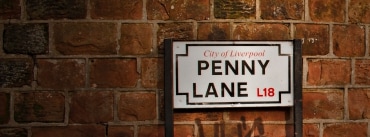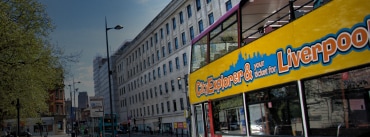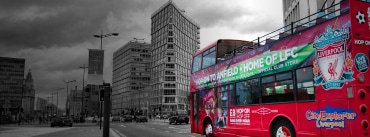Cinema in the 1960s was a very different experience from what we know today, both literally and figuratively. The theatres were big (many of them old playhouses converted into screening rooms), with heavy curtains, balconies, and a real sense of spectacle.
And you didn’t just go to the cinema to watch ‘a film’. Many sessions were called double features — two films for the price of one, usually a main feature and a supporting B movie. Short films, newsreels, and trailers before the big productions were also part of the deal.
It was a family event. But then…
Then A Hard Day’s Night premiered. And the screenings — which weren’t exactly well-behaved to begin with — turned into absolute bedlam. Forget the picture of mum, dad, and the kids quietly sitting in their seats, nibbling on popcorn. What unfolded looked more like a rock concert than a cinema screening. You can picture it easily: teenagers on their feet, screaming through the songs, clapping along, and laughing loudly at the jokes. For many young people, it was the first time they had ever seen themselves represented like that on the big screen.
But why did A Hard Day’s Night cause such a stir?
How Four Lads Redefined Cinema
1. Youth at the Centre of the Screen
Up until the early ’60s, most cinema was still aimed at adults, with grand dramas, epics, and stars from earlier generations. The Beatles’ film blew that apart. It put four lads from Liverpool at the centre, portrayed with humour, irony, and youthful energy.
It was cinema made for the kids who were filling the theatres, not for their parents.
The plot is wafer-thin — essentially, The Beatles try to get to a TV performance without being devoured by their own fame — but the humour is razor-sharp. Much of the script feels like it was lifted straight from the boys’ off-the-cuff wit in interviews. Wilfrid Brambell, playing Paul’s mischievous ‘clean’ grandfather, adds an extra layer of absurdity, needling everyone around him and dragging the group into ridiculous scrapes.
The jokes are quick, deadpan, and very British. Each Beatle gets his moment, and the film never slows down long enough for the gag to lose its punch.
2. An Innovative Style
Director Richard Lester shot it like a chaotic documentary, with handheld cameras, quick cuts, and improvised dialogue. It felt spontaneous, as though you were truly chasing after the band. That visual language went on to shape the look of music videos and even reality TV.
It was chaos in motion, a black-and-white burst of Beatlemania captured on celluloid. Shot in a style closer to French New Wave than to British kitchen sink, the film followed John, Paul, George, and Ringo through a single frantic day of TV rehearsals, press conferences, fan chases, and sly one-liners.
The French New Wave was all about breaking rules. In the late-50s and ’60s France, directors like Godard and Truffaut grabbed handheld cameras, chopped scenes together with jump cuts, and made films that felt messy, fast, and alive. It was half documentary, half art experiment, and miles away from glossy Hollywood polish.
By contrast, the British ‘kitchen sink’ films of the same era (Saturday Night and Sunday Morning, A Taste of Honey) were downbeat and gritty. These were realistic, down-to-earth, often bleak stories about working-class life, with long takes, naturalistic acting, and social realism.
It could have been a cheap cash-in. Instead, it became one of the most influential music films ever made.
3. Music Woven Into the Story
Of course, the heart of the film lies in its music. Numbers like ‘Can’t Buy Me Love’, ‘If I Fell‘, and the title track explode with youthful energy.
That famous field-running sequence, with the band sprinting wild and free to the sound of ‘Can’t Buy Me Love’, is still one of the purest expressions of rock ’n’ roll rebellion ever put on screen.
And here’s the clever part: the performances don’t feel staged. Lester and cinematographer Gilbert Taylor shot them with handheld cameras and quick edits, making it all look spontaneous, as if the Beatles just happened to break into song between wisecracks. That scrappy, semi-documentary style would later inspire everyone from MTV directors to modern concert films.
The Immediate Effect
Right away, the film proved that band vehicles didn’t need to be disposable fluff or blatant merchandising. A Hard Day’s Night showed you could make real cinema.
It also made it clear that youth had both a voice and spending power: they were the ones filling the theatres and dictating trends, not their parents. And that shifted how the entire cultural industry looked at young people: not just as an audience, but as the creative driving force.
The impact went beyond music. Directors, advertisers, and musicians began to experiment with new ways of fusing sound and image, laying down a style that would spill into music videos, commercials, and even the way live concerts were filmed.
In the end, A Hard Day’s Night became a bridge between traditional cinema and counterculture, opening the door to the visual and narrative freedom that would define the late ’60s.




















